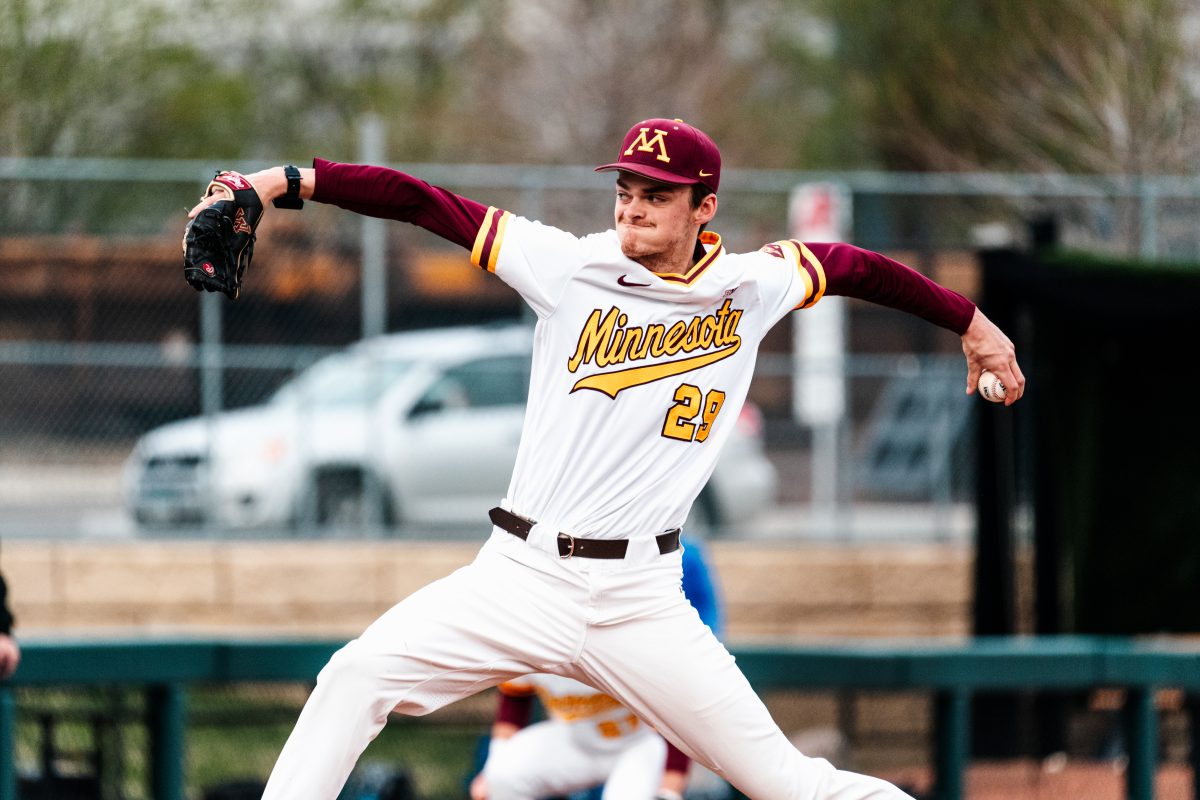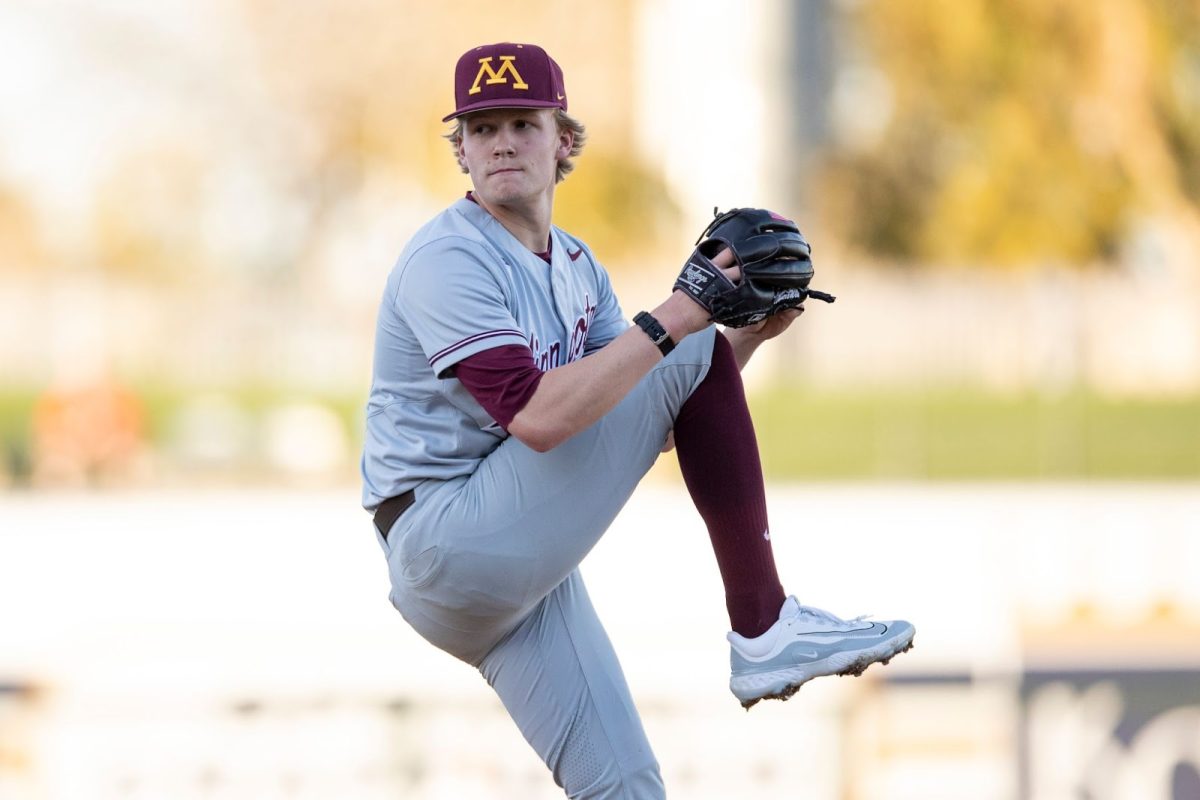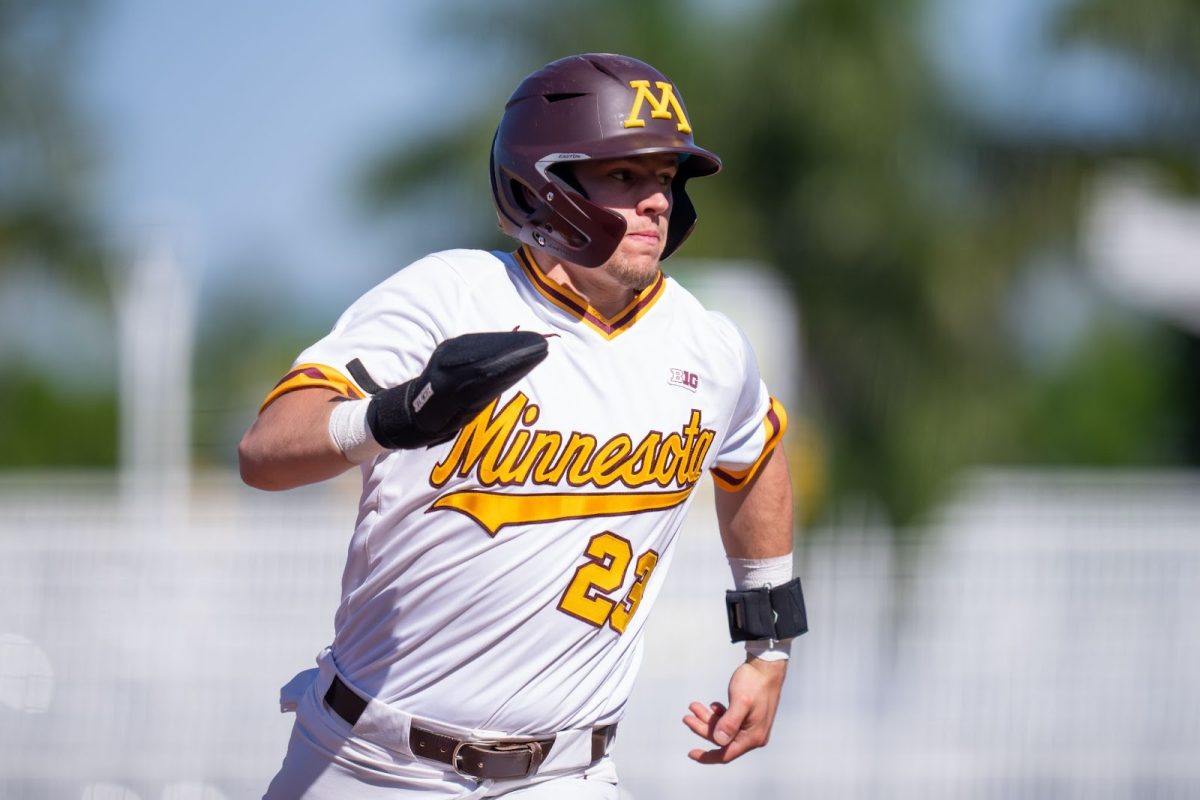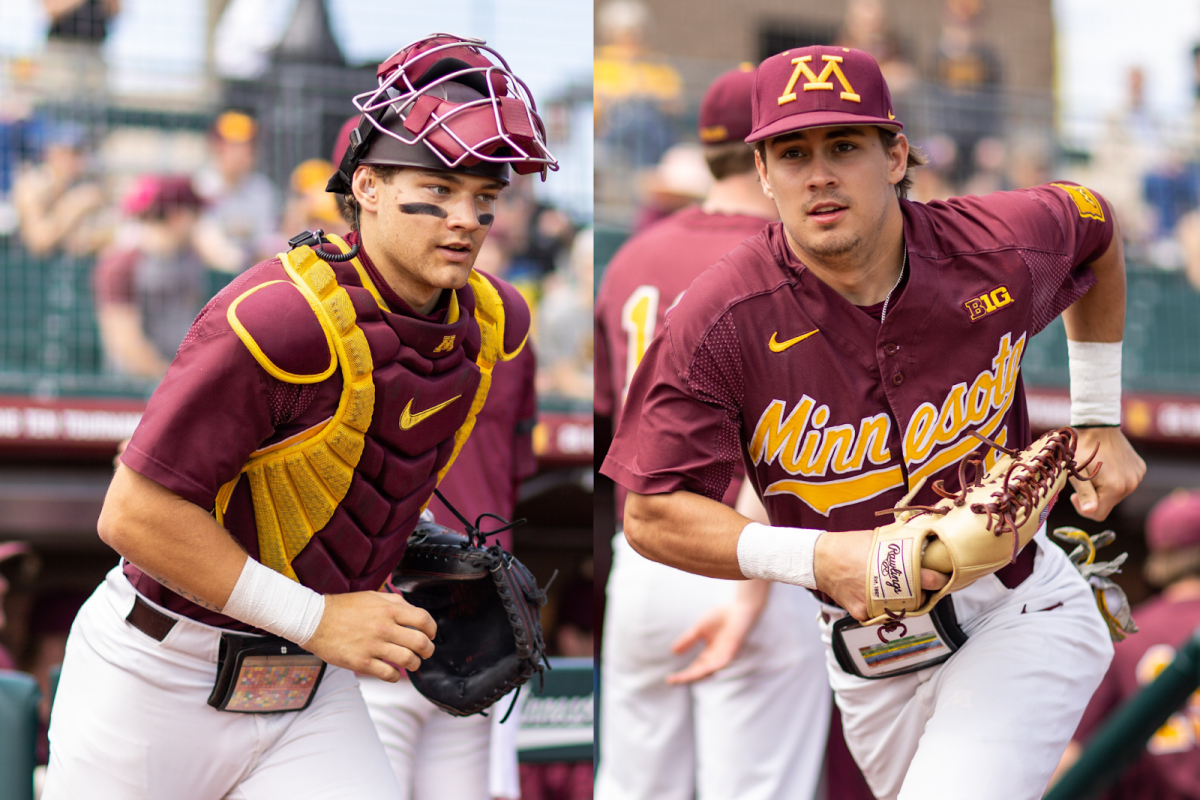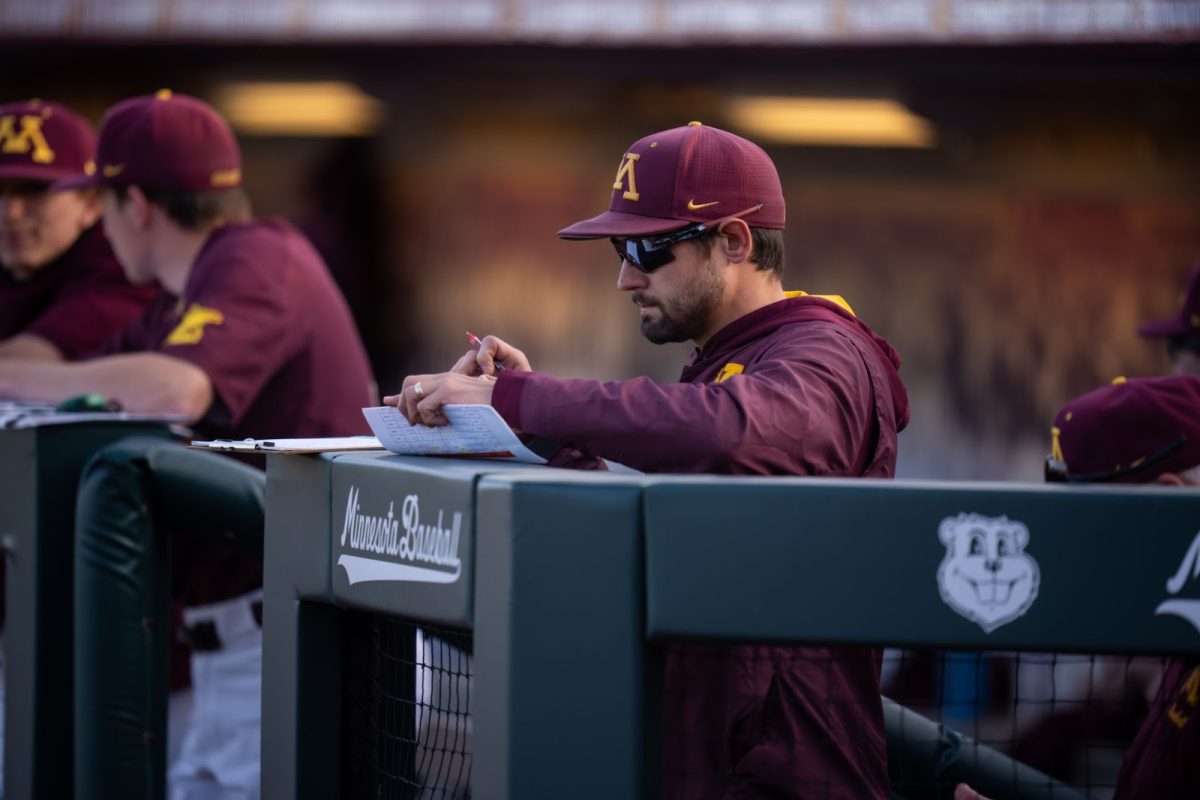ESPN broadcasted one Big Ten baseball game this season.
A national audience was able to see Big Ten baseball at its best – Ohio State at Michigan provided a sellout crowd full of rowdy fans, two of the best programs in the Big Ten, a classic Buckeyes-Wolverines rivalry and, oh, the reason for most of the Big Ten’s NCAA complaints.
It was snowing. On April 22.
“It wasn’t the biggest statement for Big Ten baseball,” Minnesota coach John Anderson said. “But it was a step in the right direction.”
That one day in the national spotlight might have shone a little bit of light on the overarching issue.
College baseball has become more and more divided during the years, skewing the competitive edge in favor of teams from the South. The 2005 College World Series bracket was set Monday, and the northernmost team was Oregon State, which is a mere 60 miles from the California border. The only other Northern team is Nebraska.
NCAA baseball is currently divided into two ideals – those who feel college baseball needs to become more unified and those who feel college baseball is exactly where it ought to be.
Basically, it’s the Civil War with bats instead of bayonets.
But the deep-seated divisions that exist are proving resistant to change, in spite of the efforts of people such as Anderson.
Glory days behind B-10
College baseball is a growing market for televised sports, and ESPN has taken full advantage. It is now serving as a window through which college baseball fans can view the ever-growing gap between Southern and Northern baseball.
But it hasn’t always been that way.
Back in the early days, the Big Ten was an elite force.
In the first 20 years after the NCAA created a Division I national championship from 1947-66, the Big Ten won six national titles, including Minnesota three times (1956, 1960 and 1964), Michigan twice and Ohio State once.
Minnesota is one of eight Big Ten teams on the top 50 all-time winningest teams list, including No. 4 Michigan, No. 11 Illinois, No. 21 Ohio State, No. 32 Michigan State, No. 37 Indiana, No. 41 Iowa and No. 47 Penn State. Minnesota is No. 15.
But no Big Ten team has won a national title since the Buckeyes did it in 1966, and Anderson said the South is bent on keeping it that way.
“There are just too many individual agendas in college baseball,” Anderson said. “Some of them are at the bottom trying to get to the middle, and others are trying to stay on top.”
Anderson said he feels the Big Ten, specifically, should be trying to collaborate a bit more, combine agendas and put more effort toward getting better as a conference to compete nationally.
That’s where Ohio State coach Bob Todd comes in.
RPI favortism?
Todd, who currently sits on the NCAA Baseball Issues Committee, said many concerns have been voiced calling for change and a more competitive postseason.
First and foremost, there needs to be a more effective way of deciding who gets in and who gets left out of the NCAA Tournament, he said.
The NCAA currently uses a Ratings Percentage Index system that depends on a team’s strength of schedule, which weakens during conference play in the North and is affected little by home-field advantage.
This is a situation that doesn’t bode well for college baseball, Michigan coach Rich Maloney said.
“Until we penalize Southern teams for playing as many home games as they do, we aren’t going to do anything productive about it,” Maloney said.
Todd said it’s also difficult for Northern teams to compete with Southern teams during nonconference play because of the early season weather differences.
“It’s a statistical fact that the home team wins about 70 percent of the time,” Todd said. “Now, how are Northern teams supposed to get excited about going down to play a team from the SEC when they only have a 30 percent chance of winning the game?
“You add to that the fact that (Northern teams) don’t get a chance to have live practices, see live pitching, field live balls. You’re basically handing the game over to the other team who has been practicing outside in nice weather for the past month.”
The idea that Northern teams are going to lose 70 percent of their early season games doesn’t do anything to help their RPI when it comes time for the tournament selection committee to make its choices.
This has led many teams to question whether a conference tournament at the end of the season is even worth having.
Need for tournaments
Anderson said that if they are going to choose to continue to have a Big Ten Tournament, it has to serve a purpose, such as raising money for the conference or gaining prestige in the eyes of NCAA baseball fans.
And the venue has much to do with it.
Anderson pointed to the mid-major Horizon League, which played its conference tournament this season at Victory Field in Indianapolis, which was named the best minor-league ballpark in the country by Sports Illustrated. They’ve also held it at the Cleveland Indians’ Jacobs Field.
He said the Big Ten doesn’t seem to get a strong enough consensus from around the league to get sponsorship and support from private venues to improve its national prestige.
“It’s imperative that if we are going to try to keep having this thing that we work hard at upgrading it and try to do better nationally,” Anderson said. “I’m not a big proponent of the tournament. But if you are going to have it, I think it should be at a venue where you can showcase your conference.”
Currently, the Pac-10 doesn’t have a conference tournament. Instead, the regular season champion is given an automatic berth into the College World Series regionals.
Anderson said most major-conference teams are for having conference tournaments because they make money that goes toward beautiful ballparks and all their expenses are being paid for.
“It’s there because they make money, they showcase their league, it’s great for recruiting, it’s on television and they are sponsored,” Anderson said. “We spent close to 40,000 (dollars) going to Champaign (Ill.) for what? I mean, what did we really accomplish?”
National starting date
Todd said a national starting date is the one realistic solution that could possibly solve more than one problem.
“One of the things that nobody ever seems to look at is weather and climate,” Todd said. “Northern teams start their seasons anywhere from two weeks to a month and a half later than teams from the South.”
A national starting date, which is currently used in football and is decided based on the first scheduled date of NCAA competition, could be used to level the playing fields between the North and the South.
Todd said the problems lie with determining the date, factoring in student-athlete academic welfare and then the hardest part – getting everyone to agree.
He pointed toward some of the smaller Northern conferences, such as the Horizon League, as those who would help the Southern teams dismantle any potential change to the current system.
But why should a smaller conference, which has no chance of competing nationally because of scholarship availability and the recruiting process, go out of its way to help more teams become better than it is?
The drastic solution comes in the possibility of a separate collegiate baseball association – a break from the NCAA.
Coaches Anderson, Maloney and Todd all acknowledged the possibility of a separate college baseball association that would have no ties with the NCAA.
It is, however, a controversial topic, which however fortunate or unfortunate, has no legs.
“The truth is that we are in a tight spot right now in our sport; nobody wants to budge,” Todd said. “We need to focus on one issue at a time and go from there. We need to take baby steps.”










